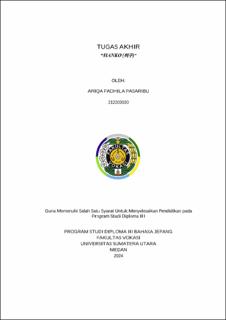Hanko (判子)

Date
2024Author
Pasaribu, Ariqa Fadhila
Advisor(s)
Barus, Murniati Br
Metadata
Show full item recordAbstract
Every country uses a signature as a sign of attestation for a document. In Indonesia, a signature is a requirement for validating documents and creating personal data. But in Japan, it is more common to use an object called hanko, which has the same value as a signature. This paper aims to explain the culture of hanko in Japanese society. The use of hanko is very important in the daily life of Japanese people. This writing uses the library search method, which is a method that comes from reading as information. Hanko was first introduced during the Han Dynasty. At that time, hanko could only be used by the Emperor and the samurai. Hanko began to enter the Japanese government system in the Nara period for trade purposes. Hanko began to be used generally in the Meiji period. Because at that time, Japanese people were required to fill in personal data for the benefit of the country. But there were still many Japanese people who could not read and write. So the use of hanko was allowed for all people in Japan. Until now, Japanese people still use hanko for document validation. Nowadays, it is important to accept both modern progress and cultural heritage. Hanko has aesthetic value and practicality. Therefore, hanko is still used today. Hanko also serves as the identity of Japan.
Collections
- Diploma Papers [43]
